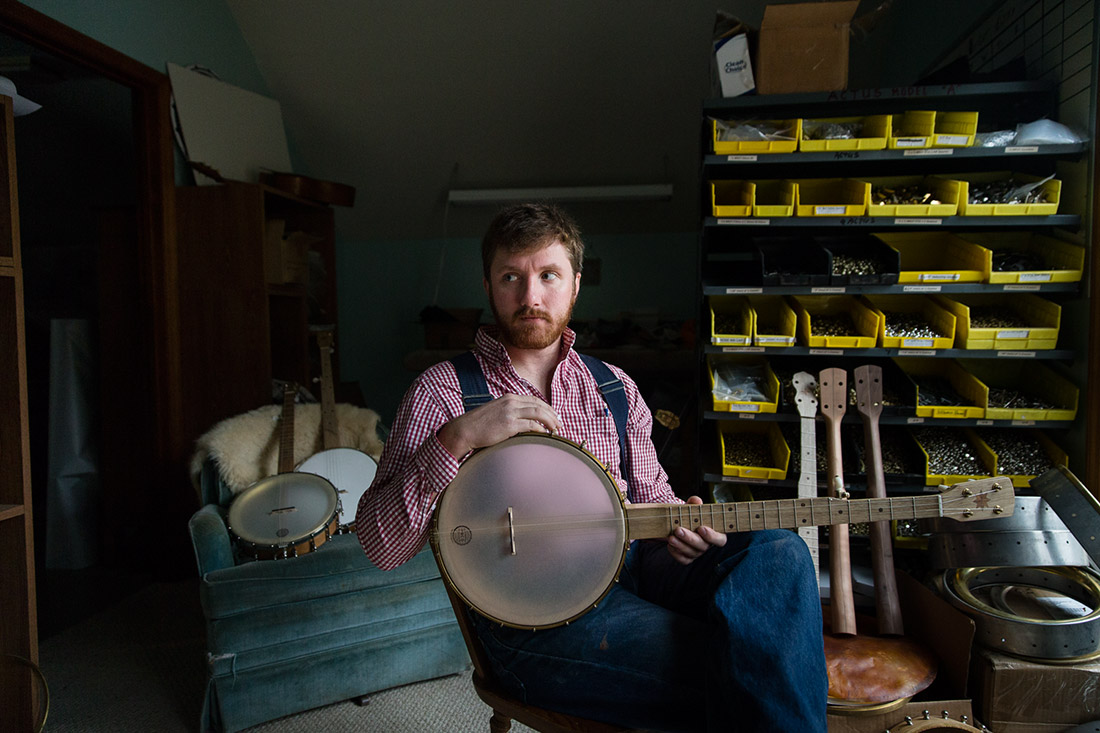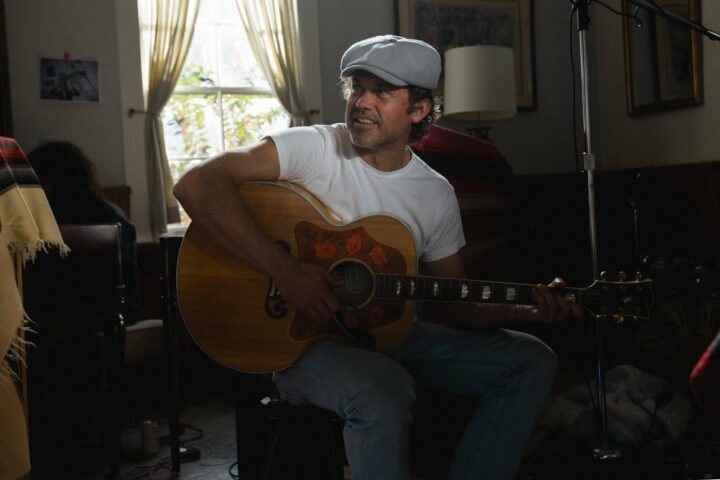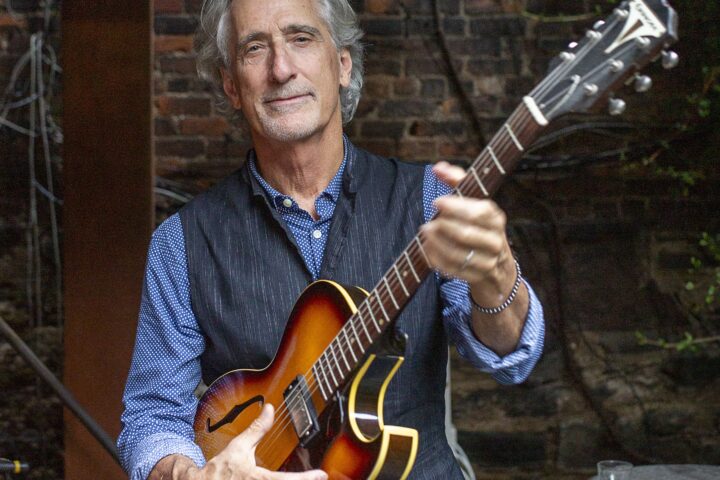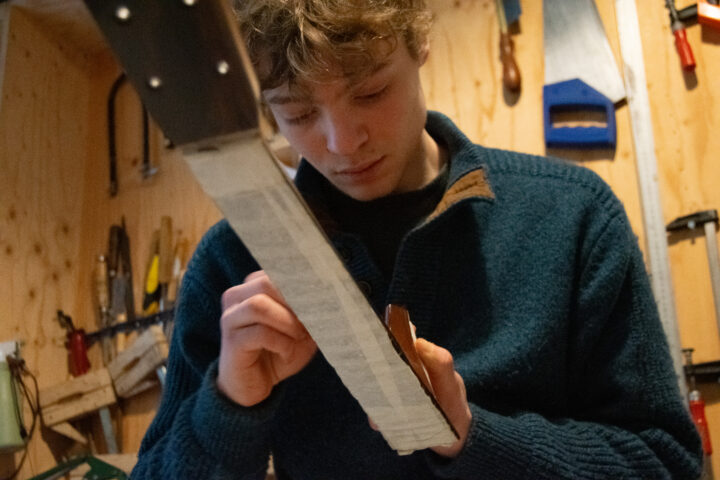For this Bench Press, we talk with Patrick Heavner, founder of Pisgah Banjos in Fairview, North Carolina. As a student of sustainable technology and a builder of old-time instruments, Patrick tackles the seemingly impossible task of making banjos that are at the same time steeped in tradition and conscious of environmental concerns — and making them appeal to a wide audience. We got a chance to talk with Patrick as he told us about how his college studies and time spent in folk schools and hiking the Appalachian Trail led to the creation of one of the most buzzworthy banjo companies out there today.
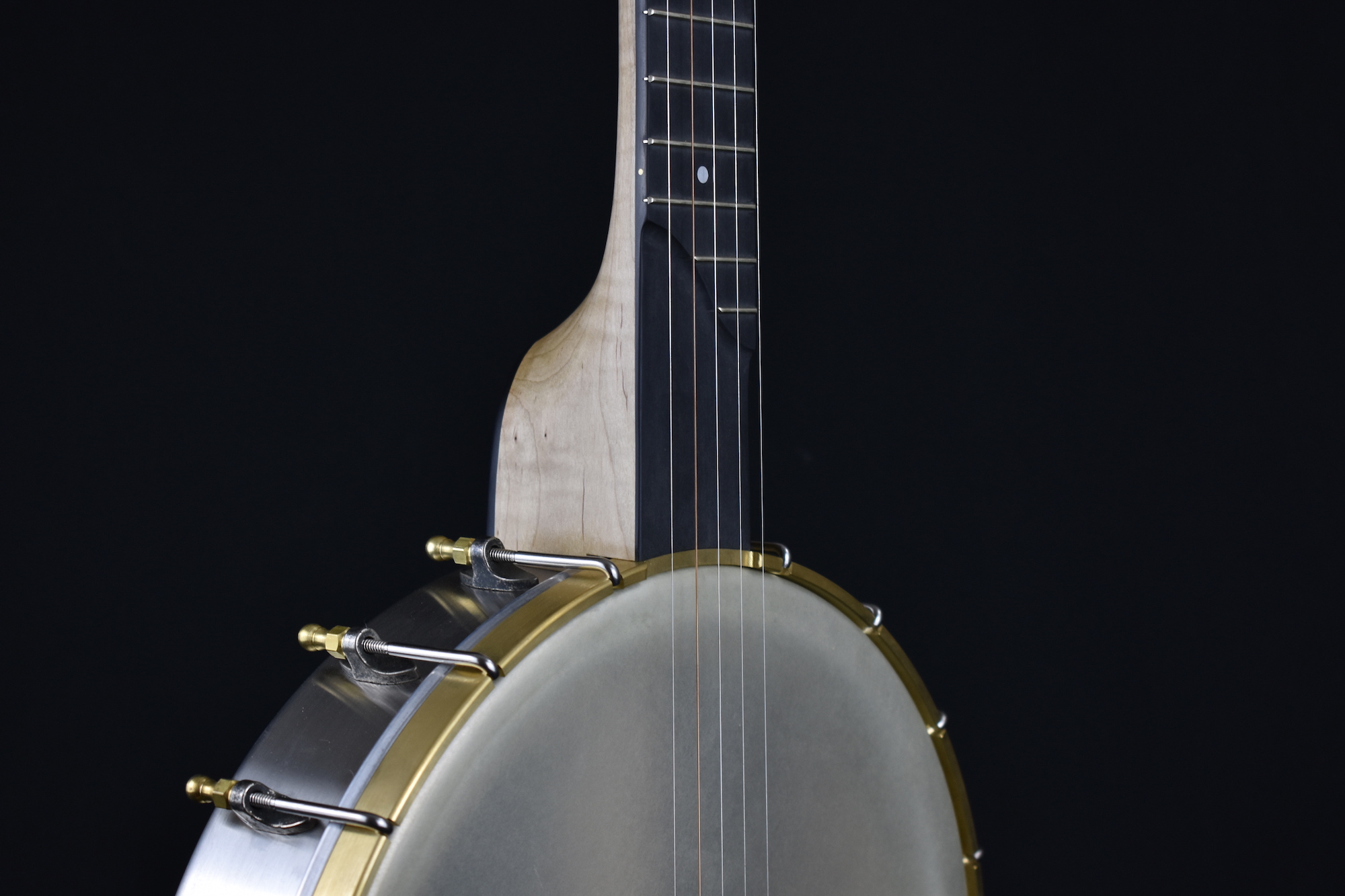
What’s on your bench right now?
We’re currently assembling and setting up 75 custom and retail banjo orders which we’ll be shipping out over the next few weeks. They consist of various models and custom orders and are all in different stages of assembly. On top of that, we are constantly making banjo rims so they can “season” before turning — probably 300 or so rims in our stockpile waiting to be turned, with more made every day. We’re able to make 18 rims per day. We’re also starting to make more metal parts in-house such as Tubaphone and electric tone rings. I also try to set aside time for new design work and R&D.
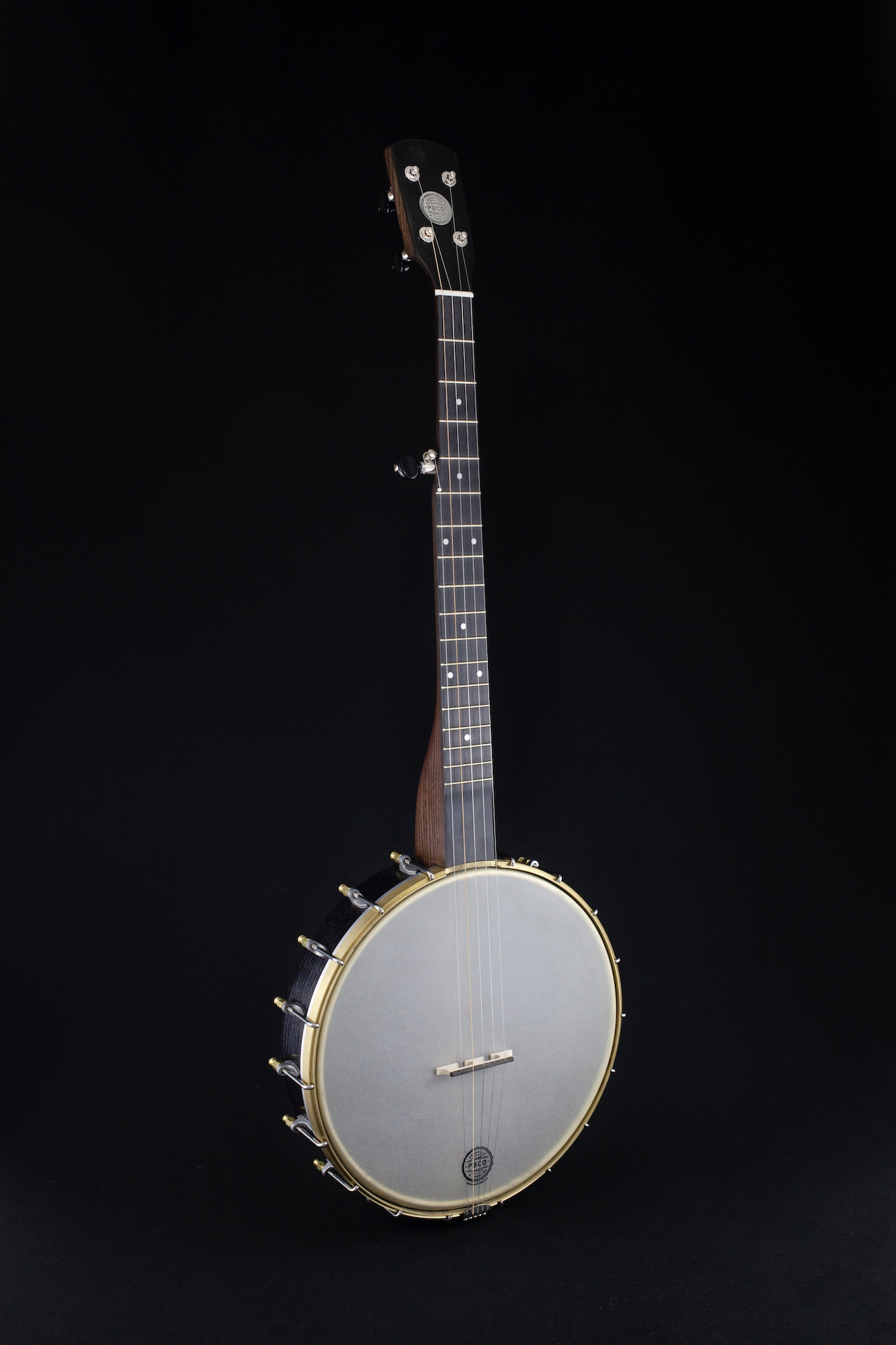
How did you get started doing this?
I was a trombone player in high school and enrolled at Appalachian State University to become a music major. Someone in my dorm hall had a resonator banjo which I was intrigued with. At the same time, I was taking a class on Appalachian studies and we were learning about traditional Appalachian and old-time music. After messing around with my dormmate’s banjo, I asked my parents for one of my own for my 19th birthday. It was a cheap Johnson banjo, and I took to it rather fast. Very quickly I knew I needed a better banjo and was recommended to a local luthier named Charlie Glen in Beech Mountain, North Carolina, who makes bracket banjos, mountain banjos, dulcimers and fiddles. Instead of purchasing a banjo, I asked Charlie to show me how to make one for myself. That day, he sat me down and showed me how to roll a banjo rim. Over Thanksgiving break in 2005, I started making my first banjo in my father’s woodworking shop and went back to Charlie several times for advice and help, showing me how to do fretwork and setup and those sorts of things.
After playing this banjo for a few months, I wanted to make more banjos and decided not to pursue the very demanding music degree. Instead, I became a geography major and sustainable technology minor which allowed me more flexibility to spend nights and weekends in the woodworking shop as a lab assistant part time. By the time I graduated, I’d made six banjos in the university shop.
After graduation, I became a host at the John C. Campbell Folk School in Brasstown, North Carolina for six months where I was able to learn blacksmithing and chair making while playing my banjo as much as I could. After that, I hiked the Appalachian Trail and I actually carried a little banjo with me. While hiking, I decided I wanted to start a banjo building business when I finished. I even decided then to use the name Pisgah Banjos while I was hiking because I was inspired by the time I’d spent in Pisgah National Forest. I moved to Asheville after hiking the Trail and started renting a large storage unit to build prototypes and figure out a production process that would eventually become Pisgah Banjos.
Things have grown so much in just the few years we’ve been around, and it’s been really special to watch. It truly is a pleasure to go to an old-time festival and see our banjos in every campsite and see the videos that happy customers post on social media. I never thought we would grow this much and hope to continue even further with our mission of sustainability. All builders in the instrument making industry have the opportunity to be socially responsible and environmentally friendly. We only hope to encourage and inspire them to take that into consideration.
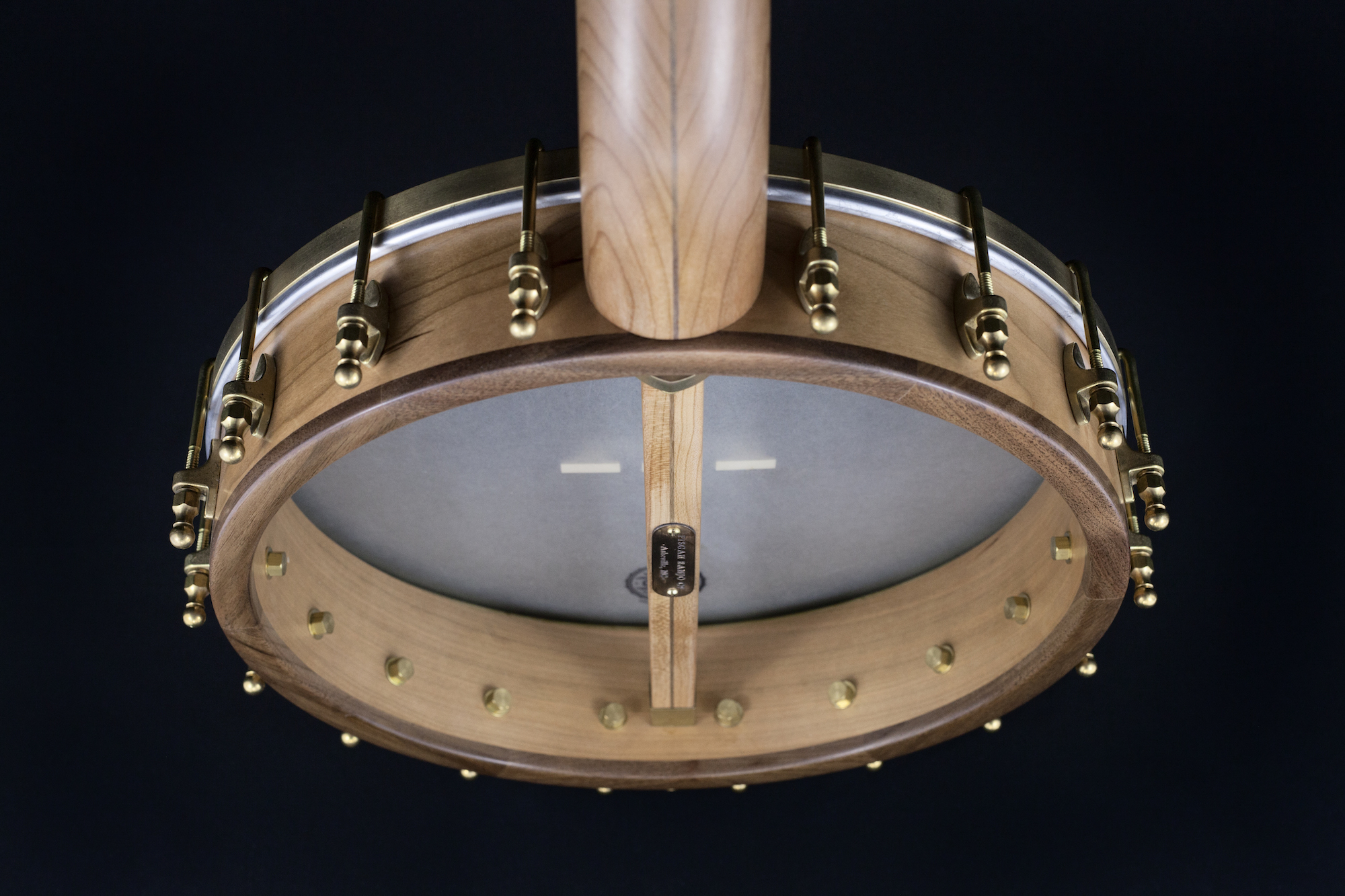
Can you tell us about your shop? Where is it located?
My current shop is a 4,000 sq. ft. former auction house with a nice concrete floor and 10 foot ceilings in Fairview, North Carolina, twenty minutes from Asheville. It’s adjacent to some large tracts of farm land and a few residential houses. It’s set up more like an old school banjo factory rather than a studio or shop in that we have stations set up in different parts of the shop to streamline production. We also run Balsam Banjo Works out of a portion of the shop which ships all the hardware we have manufactured and use in our own banjos to other banjo builders across the world. All the hardware is designed to pay respect to the banjo hardware used at the turn of the century and is all made in the USA by machine shops I have partnered with over the years.
How did your decision to use 100% native hardwoods or other sustainable materials in your building come about?
Having a background in sustainable technology and five years’ experience working in the solar industry after college, it’s important to me to be socially and environmentally aware of every decision that goes into building a banjo. When I started Pisgah Banjos in 2012, some of the builders I knew of had a model or two using hardwoods local to their areas, but I wanted to create a niche and base my entire business on sustainability. I thought that hopefully it would influence other builders to use sustainable local materials as well as hardware made domestically. The first 12 or so banjos we built had black locust fingerboards, but I soon discovered persimmon to be a great material for tone rings and fingerboards. There was a lot of demand for black fingerboards, so we started using Richlite, a recycled paper and phenolic resin product which fit nicely with our mission of using sustainable materials. Half the banjos we currently build have persimmon fingerboards and the other half Richlite.
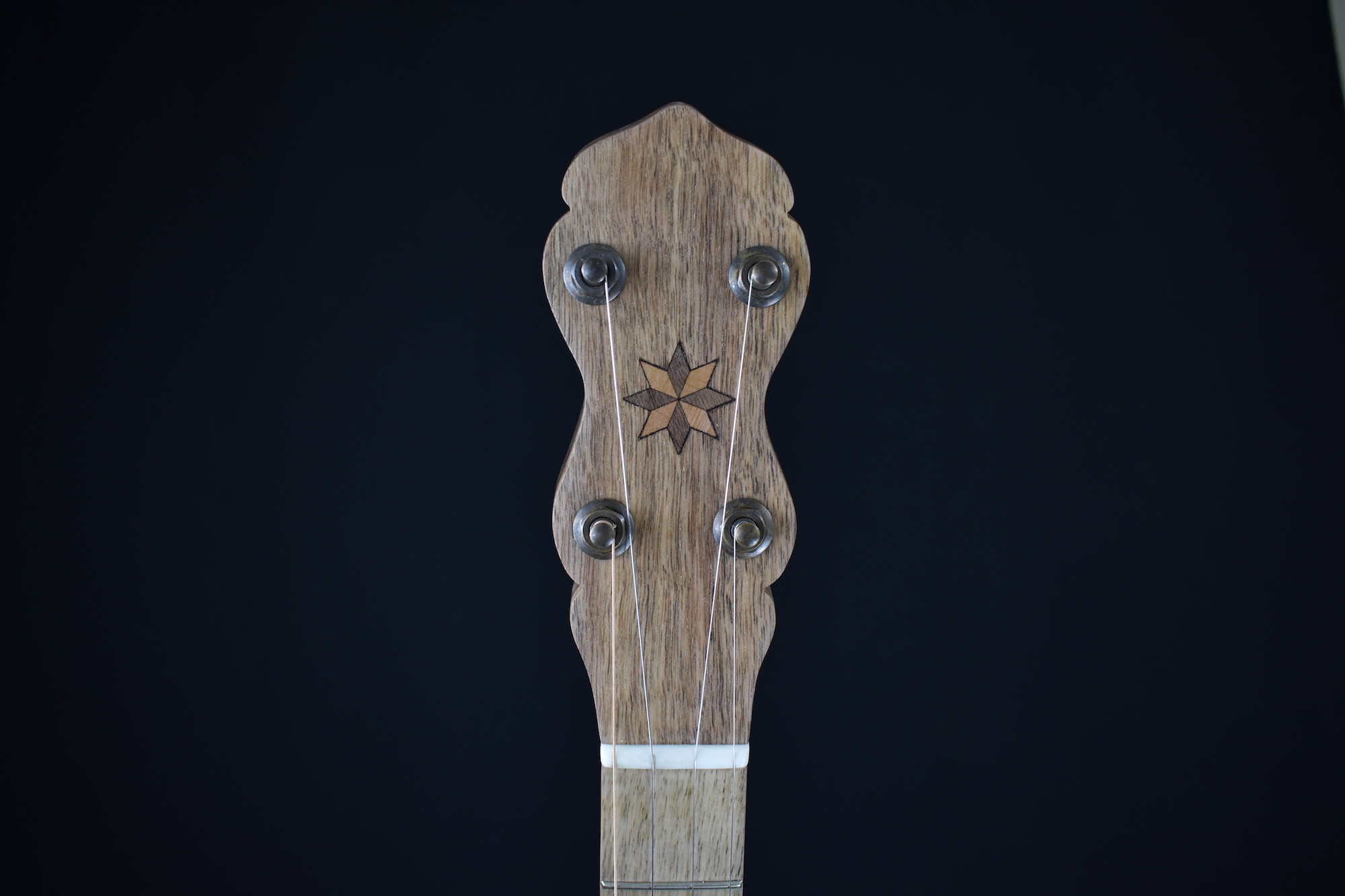
Do you have a particular philosophy about wood/materials or about building as a whole?
Every banjo we build has to incorporate the best parts and the best wood. The materials have to be locally or domestically sourced, and the end product has to be affordable to the average person looking for a quality banjo. At the time I started, I felt like there were a lot of banjo makers that lacked one of these three criteria and that by finding a way to hit all three, we would create a solid niche.
Since we try to run things like a factory, like I said earlier, decisions in the building process need to be relatively quick and easy to implement and reproduce. And, of course, the design of the banjo needs to be aesthetically pleasing. Beyond that, the banjo needs to be set up well and sound the way a banjo should.
We make everything by hand using power shapers and jigs. We draw the line at using CNC machines. I wanted to recreate the process of banjo building that was used over 100 years ago with similar machines and techniques so we can claim our instruments are handmade instead of computer made. I simply feel more of a connection to the instrument if I am physically passing a neck through a cutter head on a shaper. There is a lot of subtlety and craftsmanship that goes into doing things way whereas CNC takes that away.
You also teach building workshops to people who have little or no experience with woodworking or instrument making. When and why did you decide to start teaching?
While a host at the John C. Campbell Folk School, I gained an appreciation for passing on traditions and sharing knowledge, especially traditions and knowledge that come from Appalachia. I’d always had a desire to one day teach at the Folk School. Then in 2013, I was approached by Warren Wilson College to possibly teach a banjo building class through a program of theirs that’s open to college students as well as folks not involved with the college. I agreed to teach, and the one-week class was a success and eventually allowed me to start teaching at the Folk School that I’ve always loved. We currently teach one class a year at Warren Wilson College and one class a year at the Folk School. I’ve taught this class 12 times now and everyone walks away with a complete finished banjo made from scratch. I’m a believer that if you work with your competition instead of against, everyone wins. Bart Reiter from Bart Reiter Banjos taught me this as he was extremely generous with his knowledge, especially on the business side of things, when I was getting started. I’m always happy to teach future banjo builders, especially if they purchase banjo hardware from us and use parts made in the USA.

Are there any upcoming projects you’re particularly excited about?
I’m currently working on new banjo hardware designs, in particular ball-end shoes and tone rings which will be close replicas to hardware from early turn-of-the-century banjos.
We are also coming out with Tubaphone and Electric banjo models soon which are also reminiscent of turn of the century Vega style banjos. We’ve made a few six string banjo prototypes which still have a drone string, just with the addition of a low string. These are called 5/6’s and will be adding these to our production line soon.
I have also started designing a pancake resonator for open back banjos which can be added easily to any open back banjo. The one I’m designing will also be a close replica from a turn-of-the-century Vega banjo and is the predecessor to what we know today as a bluegrass resonator banjo. I generally prefer the old stuff which came out during the golden age of banjo production from the 1880s through 1920.
